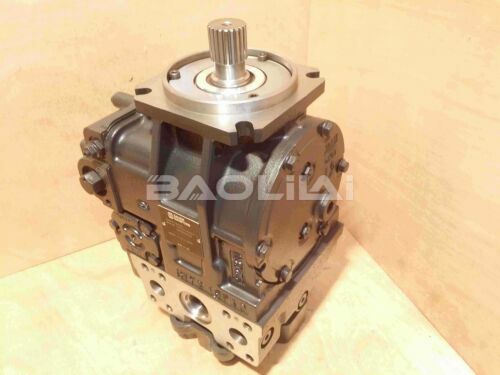Precautions for repairing Danfoss hydraulic pumps
When servicing Danfoss piston pumps, it is important to take several precautions to ensure safe and efficient repairs. Here are some key precautions to keep in mind:
1. Use appropriate personal protective equipment (PPE): When working on Danfoss piston pumps, it is important to wear appropriate PPE to protect yourself from potential hazards. This may include safety glasses or goggles, gloves, hearing protection, and a respirator or dust mask, depending on the specific repair task.
2. Follow the manufacturer's instructions and guidelines: It is very important to read and follow the manufacturer's instructions and guidelines before performing any repairs on your Danfoss piston pump. This will help ensure that repairs are carried out safely and efficiently, and that the pump is restored to peak performance.
3. DISCONNECT POWER AND LOCK EQUIPMENT: Before starting all maintenance work, be sure to disconnect power to the pump and lock all equipment to prevent accidental activation. This will help prevent injury and damage to the pump or other equipment.
4. Clean the pump and surrounding area: Before starting all maintenance work, be sure to thoroughly clean the pump and surrounding area to prevent contaminants from entering the pump and causing damage or performance degradation.
5. Use the right tools and equipment: When servicing Danfoss piston pumps, it is important to use the right tools and equipment to ensure safe and efficient repairs. This may include specialized tools and equipment for removing and installing pump components.
6. Replace worn or damaged parts: When repairing the Danfoss plunger pump, check all parts and replace all worn or damaged parts. This will help ensure that the pump operates reliably and efficiently after repairs.
7. Use correct replacement parts: When replacing components on a Danfoss piston pump, be sure to use the correct replacement parts to ensure proper installation and performance. Use of incorrect parts may damage the pump or result in reduced performance.
8. Lubricate parts as needed: When reassembling the pump after repairs, be sure to lubricate the parts as needed to ensure proper operation and prevent damage.

9. Test the pump after repair: After completing repairs on your Danfoss plunger pump, it is important to test the pump to ensure it is functioning properly. This may involve testing pressure and flow, as well as checking for leaks and unusual noises.
10. Follow Proper Disposal Procedures: When disposing of all repaired parts or fluids, be sure to follow proper disposal procedures to protect the environment and comply with regulations.
11. Keep maintenance records: It is important to keep records of all maintenance performed on Danfoss piston pumps. This will help track the maintenance history of the pump and help identify potential problems or trends over time.
12. Use appropriate fluid: When servicing Danfoss plunger pumps, be sure to use the appropriate fluid recommended by the manufacturer. Using the incorrect fluid may damage the pump or result in reduced performance.
13. Avoid overtightening components: When reassembling the pump after repairs, be careful not to overtighten components, as this may damage the pump or cause leaks.
14. Properly Tighten Bolts and Fittings: When assembling the pump, be sure to tighten the bolts and fittings correctly according to the manufacturer's specifications. This will help ensure that the pump operates reliably and efficiently.
15. Use proper lifting equipment: When removing or installing heavy parts on a Danfoss piston pump, be sure to use proper lifting equipment to prevent injury and damage to the pump.
16. Proper liquid and waste disposal: When draining liquid from the pump or disposing of waste, be sure to follow proper disposal procedures to protect the environment and comply with regulations.
17. Use a clean work area: When servicing Danfoss piston pumps, please work in a clean and tidy area to prevent contamination and ensure safety.
18. Consider training and certification: If you do not have experience servicing Danfoss piston pumps, consider seeking training and certification to ensure safe and effective repairs.
19. Follow safety guidelines: When performing any repairs, be sure to follow safety guidelines and best practices to prevent accidents and injuries.
20. Record repairs and problems: If you encounter any problems during the repair process, please record them and bring them to the attention of the manufacturer or an experienced technician. This helps identify potential problems with the pump and ensures they are properly addressed.
By following these precautions, you can help ensure that repairs to Danfoss piston pumps are carried out safely and efficiently, and ensure that the pump is returned to peak performance.
This article is published by the official website of Baolilai Hydraulics, please contact the author and indicate the source for reprinting:https://www.baolilai-pump.cn/news/333.html






